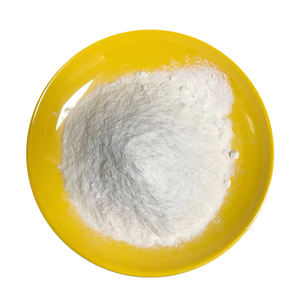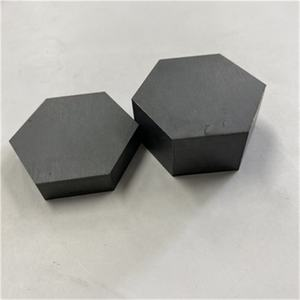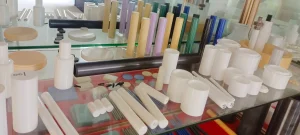Professional industry ceramic supplier, silicon nitride, silicon carbide, aluminum nitride and any other kinds of ceramics.
1. Introduction
Just 24 hours ago, a major foundry in Ohio reported a production delay after multiple silicon carbide crucibles fractured during aluminum melting—a reminder that even advanced ceramics like silicon carbide require proper handling. While silicon carbide crucibles are prized for their exceptional thermal conductivity, hardness, and resistance to corrosion, they’re not indestructible. Whether you’re in metallurgy, laboratory research, or industrial manufacturing, knowing how to troubleshoot common issues can save time, money, and materials.

In this guide, we’ll walk you through five typical problems with silicon carbide crucibles and give you clear, practical fixes. You’ll also learn how related products—like silicon carbide ceramic tiles, tubes, and even dinnerware—share similar care principles due to their shared material base.
2. Problem #1: Thermal Shock Cracking
Thermal shock is the #1 cause of premature failure in silicon carbide crucibles. It happens when the crucible is heated or cooled too quickly, causing uneven expansion or contraction.
How to fix it:
- Always preheat your crucible gradually. Start at 200°C (392°F) and increase by no more than 100–150°C per hour until you reach operating temperature.
- Avoid placing a hot crucible on a cold surface or immersing it in water while hot.
- Use consistent heating profiles—sudden power surges in electric furnaces can be just as damaging as open-flame shocks.
Pro tip: Silicon carbide ceramic tubes and silicon carbide burner nozzles are equally vulnerable. Treat all silicon carbide components with thermal patience.
3. Problem #2: Chemical Contamination or Reaction
Despite its inertness, silicon carbide can react with certain molten metals or slags—especially those containing strong alkalis or oxidizing agents.

How to fix it:
- Never melt aluminum with high magnesium content (>5%) in standard silicon carbide crucibles without a protective coating.
- For reactive melts (e.g., titanium or zirconium), consider alternatives like zirconia crucibles or boron nitride-lined setups.
- Clean residues thoroughly after each use using non-metallic brushes; avoid chlorinated or acidic cleaners that degrade the SiC matrix.
Note: When comparing boron carbide vs silicon carbide, remember boron carbide offers better chemical resistance in some extreme environments—but at a much higher cost and lower thermal conductivity.
4. Problem #3: Mechanical Damage During Handling
Silicon carbide is hard but brittle. Dropping, clamping too tightly, or scraping against metal tools can cause chips or microfractures.
How to fix it:
- Always use ceramic or graphite tongs designed for crucible handling.
- Store crucibles upright in padded racks—never stack them unless specifically designed for stacking (like rbsic silicon carbide tile blocks).
- Inspect for hairline cracks before each use; even small flaws can propagate under heat.

This same caution applies to other fragile silicon carbide items, such as silicon carbide ceramic columns, rings, or even delicate pieces like silicon carbide ceramic butter dishes.
5. Problem #4: Glaze or Slag Buildup Reducing Efficiency
Over time, fluxes, oxides, or molten residues can form a glassy layer inside the crucible, insulating it and reducing heat transfer.
How to fix it:
- After cooling, gently chip away buildup using a wooden or plastic scraper—never metal.
- For stubborn deposits, perform a controlled burnout cycle at 800–900°C in an oxidizing atmosphere to volatilize organics.
- Consider applying a thin wash of boron nitride spray before high-risk melts to create a non-stick barrier.
Fun fact: The same cleaning logic works for kitchen-grade items like silicon carbide ceramic baking dishes or casserole dishes—though obviously at much lower temperatures!
6. Problem #5: Confusing Silicon Carbide with Similar Ceramics
Many users mistakenly treat silicon carbide like alumina (al2o3) or silicon nitride, leading to misuse. For example, silicon nitride crucible factories produce crucibles with higher fracture toughness but lower thermal conductivity than silicon carbide.
How to fix it:
- Know your material: Silicon carbide excels in thermal shock resistance and conductivity; silicon nitride (si3n4) is tougher but less conductive.
- Don’t substitute one for the other without verifying compatibility with your process temperature and chemistry.
- When sourcing parts like silicon nitride rings, custom silicon nitride heat shields, or silicon carbide bricks, always confirm the exact composition and grade.
Also, don’t confuse silicon carbide ceramic dinner plates—which are decorative and food-safe—with industrial-grade crucibles. They share raw materials but differ vastly in purity and sintering methods.
7. Conclusion
Silicon carbide crucibles are powerful tools, but they demand respect for their limits. By avoiding rapid temperature changes, preventing chemical mismatches, handling with care, managing residue buildup, and understanding material differences (like boron carbide vs silicon carbide or silicon nitride vs silicon carbide), you’ll maximize performance and lifespan. Whether you’re working with lab-scale melts or industrial furnaces—or even browsing silicon carbide ceramic serving bowls online—the principles of care remain rooted in smart, informed usage.
Our Website founded on October 17, 2012, is a high-tech enterprise committed to the research and development, production, processing, sales and technical services of ceramic relative materials such as 5. Our products includes but not limited to Boron Carbide Ceramic Products, Boron Nitride Ceramic Products, Silicon Carbide Ceramic Products, Silicon Nitride Ceramic Products, Zirconium Dioxide Ceramic Products, etc. If you are interested, please feel free to contact us.



